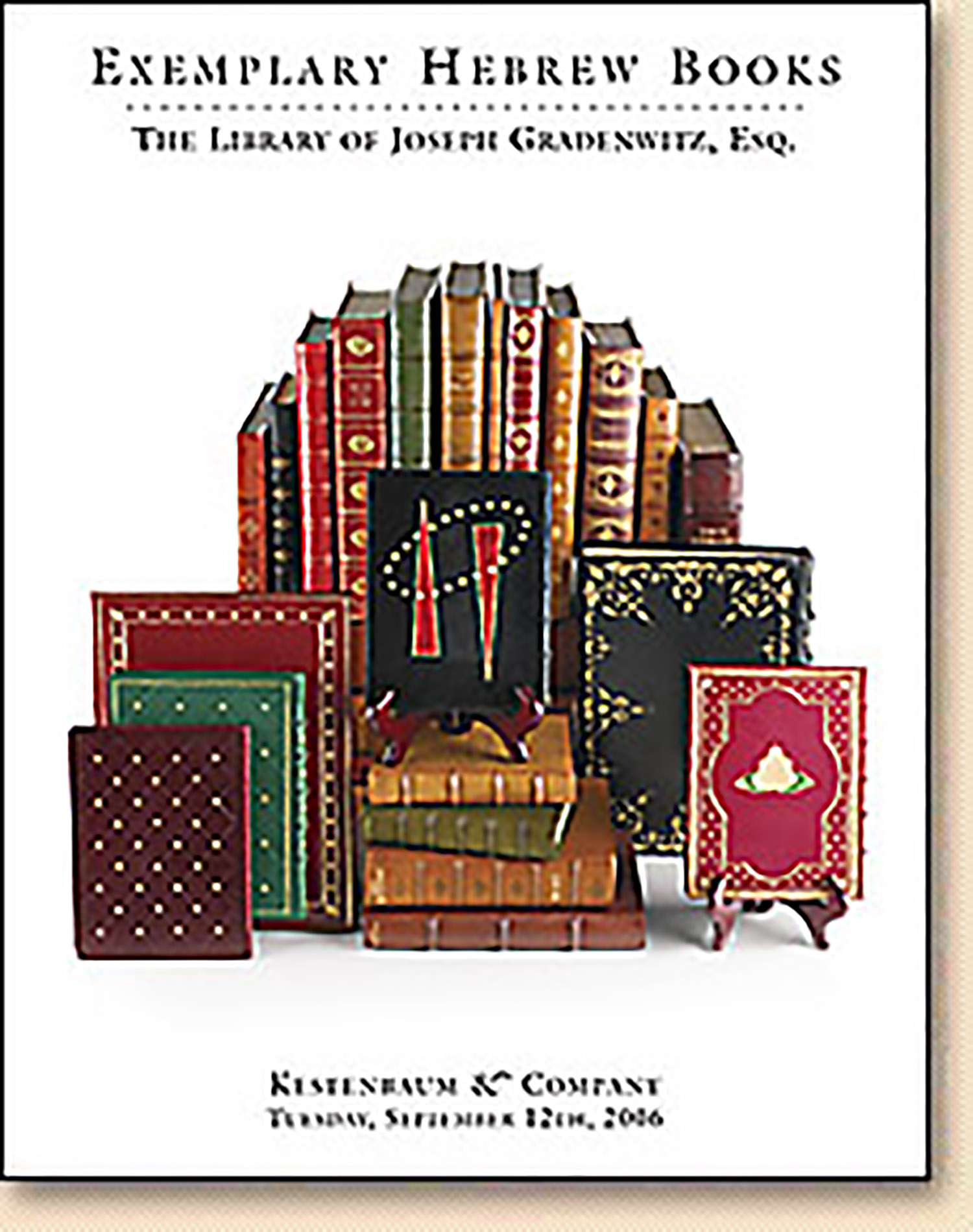(Traditionally Attributed to. Publicized by R. Moses b. Shem Tov de Leon). Sepher ha-Zohar [“The Book of Splendor”]

AUCTION 34 |
Tuesday, September 12th,
2006 at 1:00
Exemplary Hebrew Books: The Library of Joseph Gradenwitz, Esq.
Lot 138
SHIMON B”R YOCHAI
(Traditionally Attributed to. Publicized by R. Moses b. Shem Tov de Leon). Sepher ha-Zohar [“The Book of Splendor”]
Cremona: Vincenzo Conti 1559-1560
Est: $10,000 - $15,000
PRICE REALIZED $11,000
Elegant Cremona Edition of Zohar.
The Zohar, the most classic of Jewish mystical texts, was printed amidst fierce controversy. Many rabbis feared the printing of such an esoteric work; its meaning might be distorted by Christians in support of their faith, and the majority of Jews themselves would be confused by the implications of the Zohar’s mystical teachings.
The first two editions of the Zohar were printed by competing printers in the neighboring towns of Mantua (1558-60) and Cremona (1559-60), both consulting numerous manuscripts in an attempt to establish literary accuracy. The Mantua Zohar (see previous lot) was printed in three volumes in Rashi script, while the Cremona Zohar was printed in one large volume in square script. Consequently, these editions became known as the Zohar Katan (“Small Zohar”) and Zohar Gadol (“Large Zohar”) respectively.
Despite Vincenzo Conti’s judicious advertising and patronage by men of influence, the textual superiority of the Mantua version gained success and Conti’s attempts to over-reach his Mantua rivals were unsuccessful. Nevertheless, the Cremona format was favored by the Polish and German Kabbalists until the beginning of the eighteenth century.
The rarity of the Cremona edition may be due to the fact that at the time of the burning of the Talmud in Cremona in 1559, the militia sent to execute the order were not able to distinguish one Hebrew book from another, and may have inadvertently thrown into the pyre copies of the newly published Zohar.
See M. Benayahu, Ha-Defuss ha-Ivri bi-Cremona (1971), pp. 121-137; I. Tishby, Mishnath ha-Zohar, Vol. I (1949), pp. 108-110
